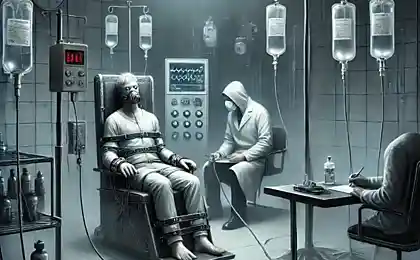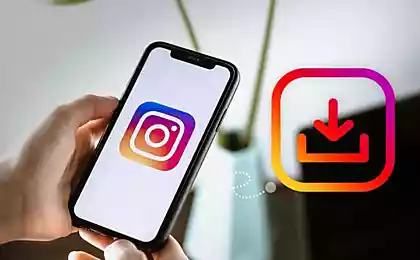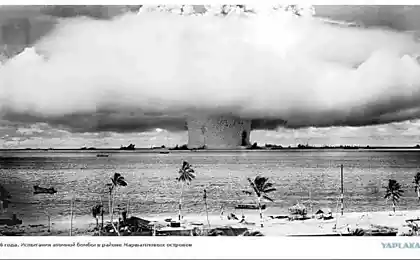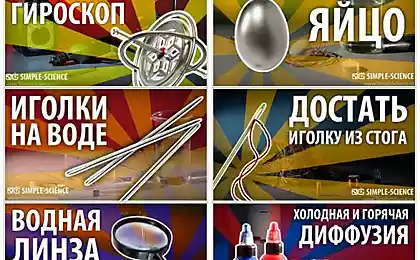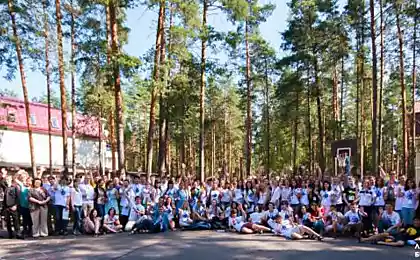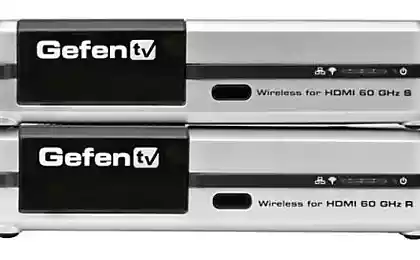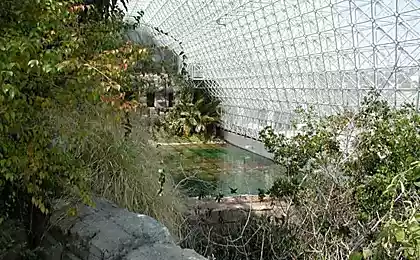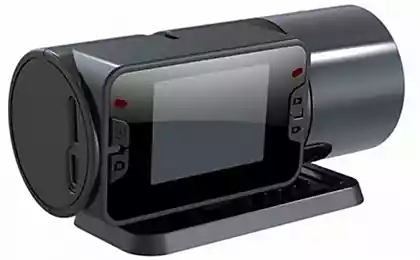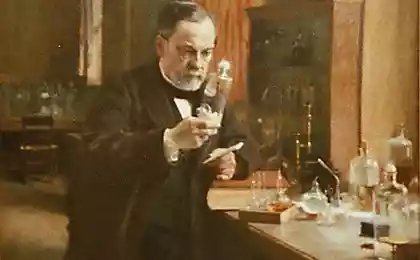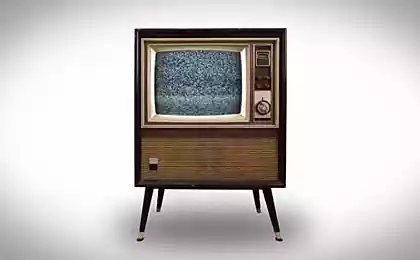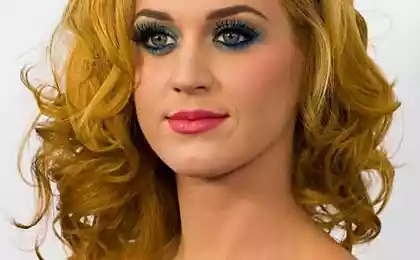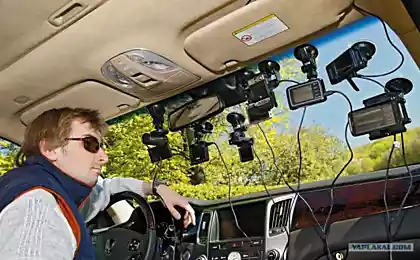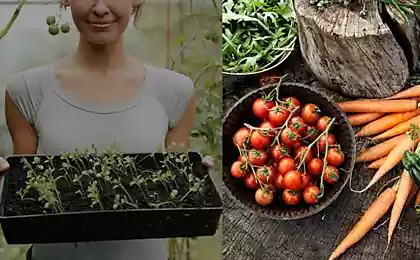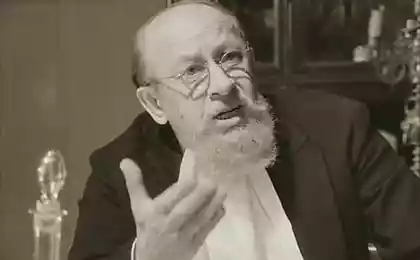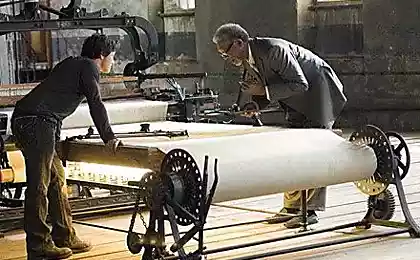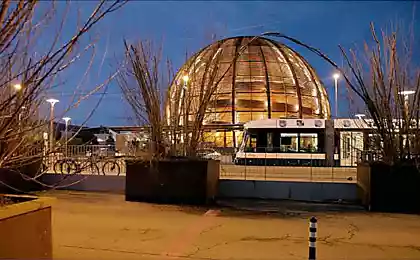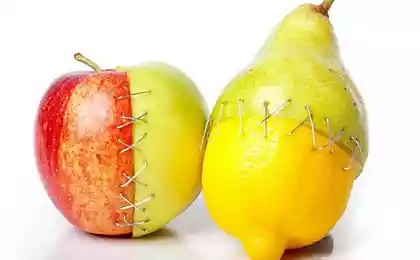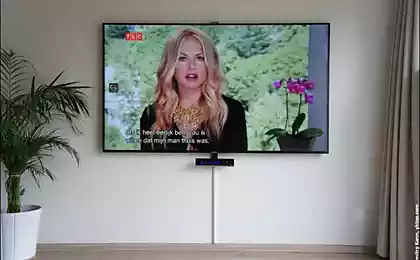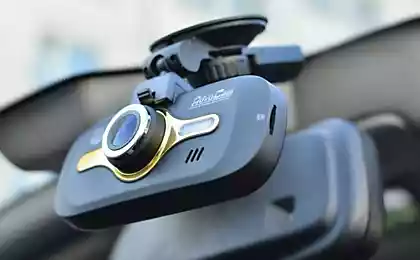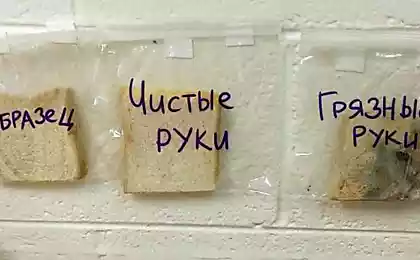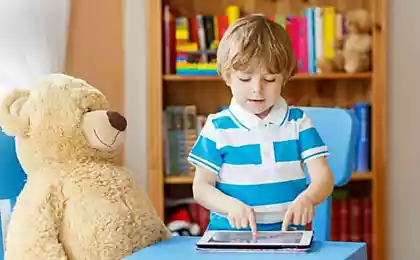766
Simple experiments and experiments
Sources: habrahabr and Simple-Science Channel on youtube.
Under the cut 14 runs. Do not break please write like finish.
Let's go!
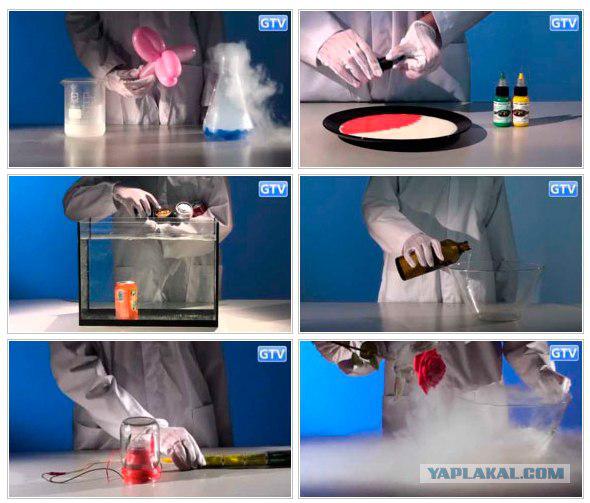
Balloons and liquid nitrogen - cryogenic experiments
For the experiment, you will need: a balloon, liquid nitrogen, dishes for low temperatures.
1. Pour into a special dish liquid nitrogen
2. Inflate the balloon.
3. Put the ball in a bowl with liquid nitrogen.
4. Take out the ball from nitrogen.
Result: the amount of gas depends on the temperature. If you put a balloon into liquid nitrogen (temperature -196C), the air in the ball will start to shrink and the ball deflate. As soon as we return the ball in a normal room temperature, the air inside the balloon begins to expand and inflates again before our eyes.
Duration 02:04
Posted in [mergetime] 1334421862 [/ mergetime]
Graphite lamp - experiments with electricity
For the experiment, you will need: 8-15 pcs battery, a thin graphite rod, a plastic cup, the glass of the bank, insulating tape, adhesive tape, wire «crocodiles».
1. We connect all the batteries in series with the help of adhesive tape.
2. Primatyvaem to the cup with both sides of the two wires to the terminals & quot ;.
3. Hold a thin graphite rod in the "crocodiles", fixed to the glass.
4. Cover with a glass glass jar and fix it with tape.
5. Connect a reverse ends of the wires coming from the graphite rod, to the batteries connected in series.
The result: the supply of 12-20v powerful batteries on a graphite rod, graphite begins to glow like a thread in the lamp filament.
Duration 03:18
Posted in [mergetime] 1334421926 [/ mergetime]
Potassium permanganate and glycerin - chemical experiments
For the experiment, you will need: glycerin, potassium permanganate, a napkin, a plate.
1. Pour on a napkin potassium permanganate (potassium permanganate).
2. Pour glycerine potassium permanganate.
3. We turn off the napkin.
The result: the reaction of permanganate and glycerin - glycerin ignited.
Duration 1:46 Candle and wine - the experience of the expansion of the air
For the experiment, you will need: candle, red wine glass, a plate.
1. Set the candle on the plate so that she would not fall.
2. Pour a small amount of wine into a bowl.
3. To ignite the spark.
4. Cover with a glass candle.
5. Once the wine is all sucked into the glass, turn over the plate with a glass.
Subtotal: air expands when heated and contracts when cooled. It shows the effect of experience with a candle and a glass of wine. Once we have covered a glass candle, the air inside the cup has expanded and pushed her over. Then, after the candle went out from lack of oxygen, the air began to cool and thus shrink the same time and pulling into a glass of wine from a plate.
Duration 1:49 Temperature differences in a fluid - thermal diffusion
For the experiment, you will need: 4 identical glass vessel, two paint colors, hot and cold water, 2 plastic cards.
1. Add some yellow dye into the vessel 1 and 2, the blue dye into the vessels 3 and 4.
2. Pour hot water into the vessels 1 and 2.
3. Pour the cold water in the receptacles 3 and 4.
4. The vessel 1 cover with plastic card, turn over gollyshkom down and put on a vessel 4.
5. The vessel 3 Cover with plastic card, we turn down the neck and set on a vessel 2.
6. Remove the two cards.
Bottom line: this experience demonstrates the effect of thermal diffusion. In the first case the hot water is on top of the cold and diffusion does not occur until the temperature is not equal. In the second case, on the contrary, under hot and cold top. And in the second case the hot water molecules begin to strive upward, and the molecules cool - down.
Duration 03:18
Posted in [mergetime] 1334422158 [/ mergetime]
Eggs in the water - with the density experiments
For the experiment, you will need: a few raw eggs, three vessels, water, salt.
1. Pour tap water into two containers full, one half.
2. Add the table salt in a pot full and half.
3. immersed in each vessel one egg.
4. Gradually vessel filled half, pour the water.
The result: an egg sinks in water. In heavily salted water egg floats. But if the salt concentration in the water to try to handle, it is possible to ensure that the half-egg emerge. It's all about the difference between the density of water and salt water.
Duration 02:52
Posted in [mergetime] 1334422222 [/ mergetime]
Banks with soda water - experiments with the weight and density
For the experiment, you will need: a few cans of carbonated beverages, the aquarium water.
1. Pour the aquarium ordinary tap water.
2. Drop a few cans of carbonated beverages from different manufacturers.
Bottom line: Not all banks sink to the bottom, despite its weight.
Duration 01:21
Posted in [mergetime] 1334422270 [/ mergetime]
Banana in liquid nitrogen - experiments with low temperatures
For the experiment, you will need: liquid nitrogen, banana.
1. Pour the liquid nitrogen into the container.
2. Clear the banana half.
3. Immerse part of the banana into the vessel with nitrogen.
4. We are waiting for 40 seconds, and take out a banana.
5. Divide the banana on the table.
Bottom line: the temperature of liquid nitrogen -195, 8 ° C. Bananas contain a lot of moisture, which, when immersed in liquid nitrogen freezes instantly. If you hit then hit the banana on the table, it will break like a ceramic.
Duration 01:28
Posted in [mergetime] 1334422314 [/ mergetime]
Rose and cryogenic freezing - experiments with liquid nitrogen
For the experiment, you will need: liquid nitrogen, rose.
1. Pour the liquid nitrogen into the container.
2. Completely dip rosebud in a vessel with nitrogen.
3. We are waiting for 20 seconds and take out the rose.
4. Divide the rose on the table.
Bottom line: the temperature of liquid nitrogen -195, 8 ° C. Rose petals contain a lot of moisture, which, when immersed in liquid nitrogen freezes instantly. If you hit then hit a rose on the table, it will split the petals, as if they were made of glass.
Duration 01:39
Posted in [mergetime] 1334422359 [/ mergetime]
Milk and liquid soap - draw milk
For the experiment, you will need: a plate, milk, liquid soap, cotton swabs and paint.
1. Pour milk into a bowl.
2. drips a few drops of ink into the milk.
3. Dip two cotton swabs in two liquid soap and immerse them in a bowl with milk.
Bottom line: when you add in the milk paint on the surface of the image of a beautiful paint spills. When you add liquid soap, paint straying into strips and form unexpected patterns on the surface of the milk.
Duration 02:11
Posted in [mergetime] 1334422404 [/ mergetime]
Balloon and cereals - static electricity
Balloon, wool and cereals - experience with static electricity
For the experiment, you will need: a balloon, a woolen scarf and oatmeal.
1. Pour a bowl of cereal.
2. rubbed a balloon on the wool.
3. trays ball to flakes.
The result: the ball is charged with static electricity when rubbed on the surface of the wool. If this then bring the ball to the oatmeal they start elektrozovatsya and attracted to the ball.
Duration 01:20
Posted in [mergetime] 1334422442 [/ mergetime]
Foam and acetone - chemical experience
Foam and acetone - chemical experience
For the experiment, you will need: acetone, polystyrene, glass vessel.
1. Pour the acetone in a glass jar.
2. Drop a foam in a container of acetone.
Result: as lowering the vessel with acetone to dissolve the foam. This happens quickly and spectacularly.
Duration 1:32 Aspirin and three layers of immiscible liquids
For the experiment, you will need: a soluble aspirin tablet, water, salt, sunflower little alcohol, paint.
1. Pour in 1 cup of water, add salt and red paint.
2. Pour the contents of one glass into the glass.
3. Pour oil into a glass 2 and a funnel, carefully pour into the glass so that the oil appeared on top of salt water.
4. Pour in 3 cups of alcohol and add the green paint.
5. Pour 3 cups a glass funnel so that the contents turned over sunflower oil.
6. Throw in a glass aspirin.
Outcome: In the glass, get three layers of immiscible liquids. After the addition of aspirin, it falls to the bottom of the glass, where a layer of salt water and begins to produce bubbles. These bubbles carry away the red liquid and passing through the layer of oil, to form what looks like a lava lamp.
Duration 02:57
Posted in [mergetime] 1334422534 [/ mergetime]
Two forks and a match - experience in the balance
For the experiment, you will need: two forks and a match.
1. We connect the two plugs together.
2. Insert the tip of the match in place of the forks, and the other end to put on the edge of a wooden stick.
3. ignite the tip of the match, which hangs from the edge of the stick.
The result: two forks keep the tip of the match, which, in turn, the other end is on the edge of a wooden stick.
Duration 01:39
That's all I wanted to say!
Source:
Under the cut 14 runs. Do not break please write like finish.
Let's go!

Balloons and liquid nitrogen - cryogenic experiments
For the experiment, you will need: a balloon, liquid nitrogen, dishes for low temperatures.
1. Pour into a special dish liquid nitrogen
2. Inflate the balloon.
3. Put the ball in a bowl with liquid nitrogen.
4. Take out the ball from nitrogen.
Result: the amount of gas depends on the temperature. If you put a balloon into liquid nitrogen (temperature -196C), the air in the ball will start to shrink and the ball deflate. As soon as we return the ball in a normal room temperature, the air inside the balloon begins to expand and inflates again before our eyes.
Duration 02:04
Posted in [mergetime] 1334421862 [/ mergetime]
Graphite lamp - experiments with electricity
For the experiment, you will need: 8-15 pcs battery, a thin graphite rod, a plastic cup, the glass of the bank, insulating tape, adhesive tape, wire «crocodiles».
1. We connect all the batteries in series with the help of adhesive tape.
2. Primatyvaem to the cup with both sides of the two wires to the terminals & quot ;.
3. Hold a thin graphite rod in the "crocodiles", fixed to the glass.
4. Cover with a glass glass jar and fix it with tape.
5. Connect a reverse ends of the wires coming from the graphite rod, to the batteries connected in series.
The result: the supply of 12-20v powerful batteries on a graphite rod, graphite begins to glow like a thread in the lamp filament.
Duration 03:18
Posted in [mergetime] 1334421926 [/ mergetime]
Potassium permanganate and glycerin - chemical experiments
For the experiment, you will need: glycerin, potassium permanganate, a napkin, a plate.
1. Pour on a napkin potassium permanganate (potassium permanganate).
2. Pour glycerine potassium permanganate.
3. We turn off the napkin.
The result: the reaction of permanganate and glycerin - glycerin ignited.
Duration 1:46 Candle and wine - the experience of the expansion of the air
For the experiment, you will need: candle, red wine glass, a plate.
1. Set the candle on the plate so that she would not fall.
2. Pour a small amount of wine into a bowl.
3. To ignite the spark.
4. Cover with a glass candle.
5. Once the wine is all sucked into the glass, turn over the plate with a glass.
Subtotal: air expands when heated and contracts when cooled. It shows the effect of experience with a candle and a glass of wine. Once we have covered a glass candle, the air inside the cup has expanded and pushed her over. Then, after the candle went out from lack of oxygen, the air began to cool and thus shrink the same time and pulling into a glass of wine from a plate.
Duration 1:49 Temperature differences in a fluid - thermal diffusion
For the experiment, you will need: 4 identical glass vessel, two paint colors, hot and cold water, 2 plastic cards.
1. Add some yellow dye into the vessel 1 and 2, the blue dye into the vessels 3 and 4.
2. Pour hot water into the vessels 1 and 2.
3. Pour the cold water in the receptacles 3 and 4.
4. The vessel 1 cover with plastic card, turn over gollyshkom down and put on a vessel 4.
5. The vessel 3 Cover with plastic card, we turn down the neck and set on a vessel 2.
6. Remove the two cards.
Bottom line: this experience demonstrates the effect of thermal diffusion. In the first case the hot water is on top of the cold and diffusion does not occur until the temperature is not equal. In the second case, on the contrary, under hot and cold top. And in the second case the hot water molecules begin to strive upward, and the molecules cool - down.
Duration 03:18
Posted in [mergetime] 1334422158 [/ mergetime]
Eggs in the water - with the density experiments
For the experiment, you will need: a few raw eggs, three vessels, water, salt.
1. Pour tap water into two containers full, one half.
2. Add the table salt in a pot full and half.
3. immersed in each vessel one egg.
4. Gradually vessel filled half, pour the water.
The result: an egg sinks in water. In heavily salted water egg floats. But if the salt concentration in the water to try to handle, it is possible to ensure that the half-egg emerge. It's all about the difference between the density of water and salt water.
Duration 02:52
Posted in [mergetime] 1334422222 [/ mergetime]
Banks with soda water - experiments with the weight and density
For the experiment, you will need: a few cans of carbonated beverages, the aquarium water.
1. Pour the aquarium ordinary tap water.
2. Drop a few cans of carbonated beverages from different manufacturers.
Bottom line: Not all banks sink to the bottom, despite its weight.
Duration 01:21
Posted in [mergetime] 1334422270 [/ mergetime]
Banana in liquid nitrogen - experiments with low temperatures
For the experiment, you will need: liquid nitrogen, banana.
1. Pour the liquid nitrogen into the container.
2. Clear the banana half.
3. Immerse part of the banana into the vessel with nitrogen.
4. We are waiting for 40 seconds, and take out a banana.
5. Divide the banana on the table.
Bottom line: the temperature of liquid nitrogen -195, 8 ° C. Bananas contain a lot of moisture, which, when immersed in liquid nitrogen freezes instantly. If you hit then hit the banana on the table, it will break like a ceramic.
Duration 01:28
Posted in [mergetime] 1334422314 [/ mergetime]
Rose and cryogenic freezing - experiments with liquid nitrogen
For the experiment, you will need: liquid nitrogen, rose.
1. Pour the liquid nitrogen into the container.
2. Completely dip rosebud in a vessel with nitrogen.
3. We are waiting for 20 seconds and take out the rose.
4. Divide the rose on the table.
Bottom line: the temperature of liquid nitrogen -195, 8 ° C. Rose petals contain a lot of moisture, which, when immersed in liquid nitrogen freezes instantly. If you hit then hit a rose on the table, it will split the petals, as if they were made of glass.
Duration 01:39
Posted in [mergetime] 1334422359 [/ mergetime]
Milk and liquid soap - draw milk
For the experiment, you will need: a plate, milk, liquid soap, cotton swabs and paint.
1. Pour milk into a bowl.
2. drips a few drops of ink into the milk.
3. Dip two cotton swabs in two liquid soap and immerse them in a bowl with milk.
Bottom line: when you add in the milk paint on the surface of the image of a beautiful paint spills. When you add liquid soap, paint straying into strips and form unexpected patterns on the surface of the milk.
Duration 02:11
Posted in [mergetime] 1334422404 [/ mergetime]
Balloon and cereals - static electricity
Balloon, wool and cereals - experience with static electricity
For the experiment, you will need: a balloon, a woolen scarf and oatmeal.
1. Pour a bowl of cereal.
2. rubbed a balloon on the wool.
3. trays ball to flakes.
The result: the ball is charged with static electricity when rubbed on the surface of the wool. If this then bring the ball to the oatmeal they start elektrozovatsya and attracted to the ball.
Duration 01:20
Posted in [mergetime] 1334422442 [/ mergetime]
Foam and acetone - chemical experience
Foam and acetone - chemical experience
For the experiment, you will need: acetone, polystyrene, glass vessel.
1. Pour the acetone in a glass jar.
2. Drop a foam in a container of acetone.
Result: as lowering the vessel with acetone to dissolve the foam. This happens quickly and spectacularly.
Duration 1:32 Aspirin and three layers of immiscible liquids
For the experiment, you will need: a soluble aspirin tablet, water, salt, sunflower little alcohol, paint.
1. Pour in 1 cup of water, add salt and red paint.
2. Pour the contents of one glass into the glass.
3. Pour oil into a glass 2 and a funnel, carefully pour into the glass so that the oil appeared on top of salt water.
4. Pour in 3 cups of alcohol and add the green paint.
5. Pour 3 cups a glass funnel so that the contents turned over sunflower oil.
6. Throw in a glass aspirin.
Outcome: In the glass, get three layers of immiscible liquids. After the addition of aspirin, it falls to the bottom of the glass, where a layer of salt water and begins to produce bubbles. These bubbles carry away the red liquid and passing through the layer of oil, to form what looks like a lava lamp.
Duration 02:57
Posted in [mergetime] 1334422534 [/ mergetime]
Two forks and a match - experience in the balance
For the experiment, you will need: two forks and a match.
1. We connect the two plugs together.
2. Insert the tip of the match in place of the forks, and the other end to put on the edge of a wooden stick.
3. ignite the tip of the match, which hangs from the edge of the stick.
The result: two forks keep the tip of the match, which, in turn, the other end is on the edge of a wooden stick.
Duration 01:39
That's all I wanted to say!
Source:
